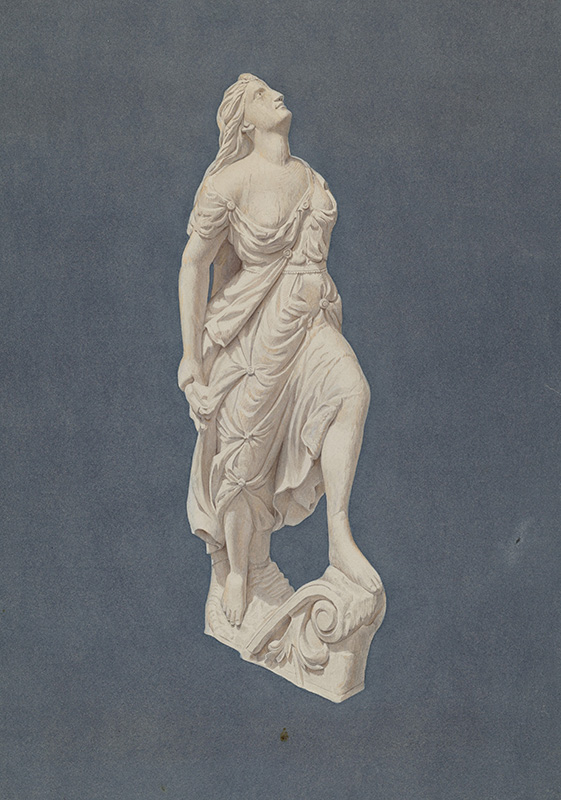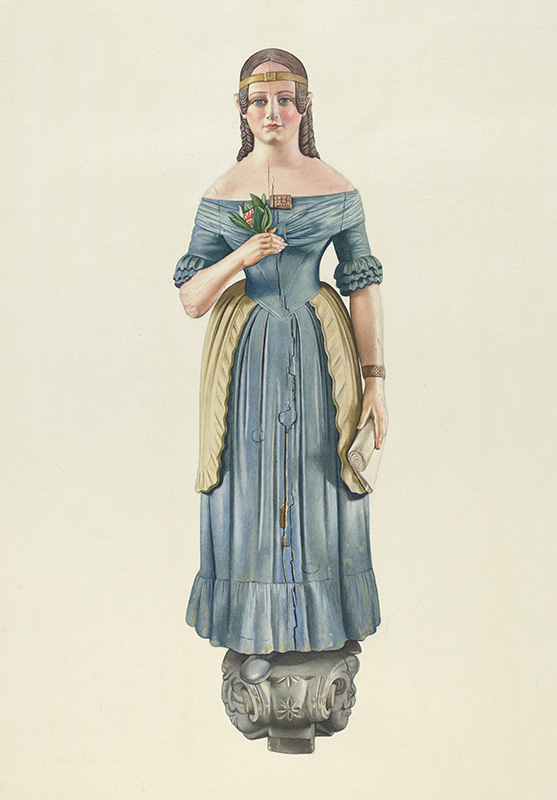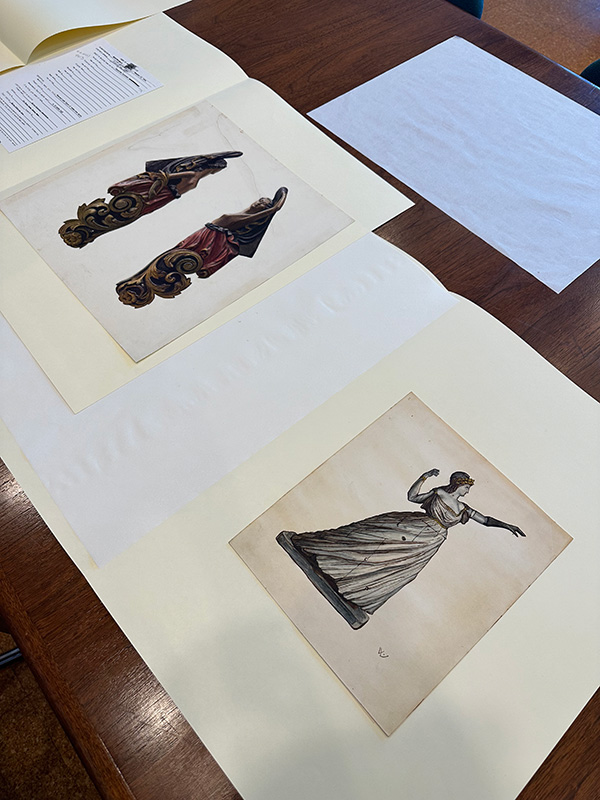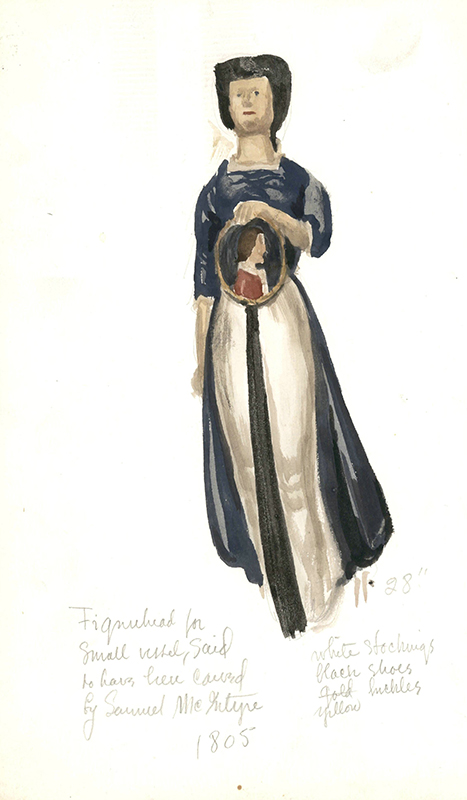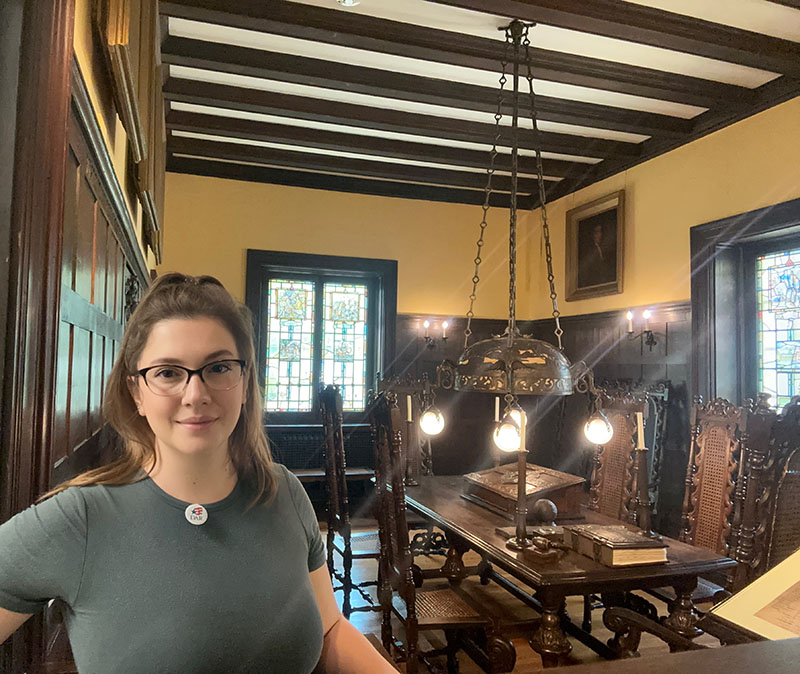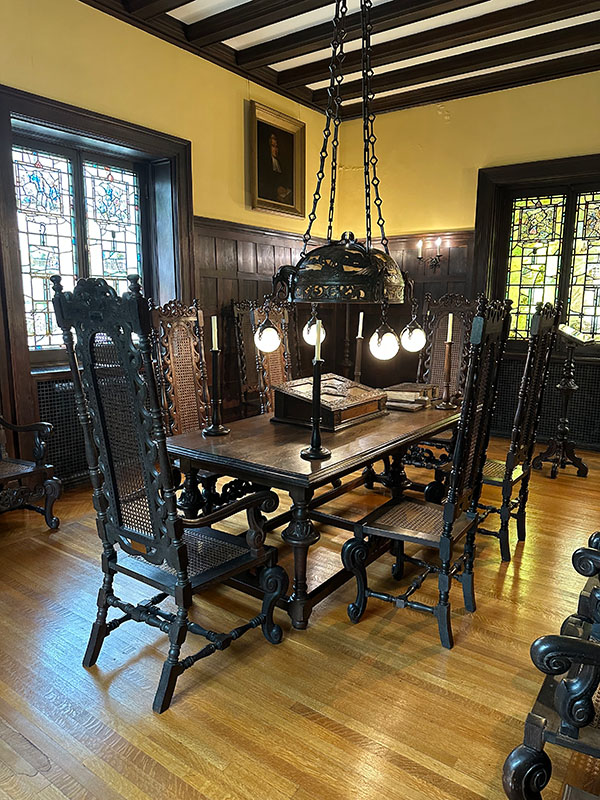Salvage in the Maritime Visual and Material Culture of 19th-Century America
by Sybil F. Joslyn
With funding from a Decorative Arts Trust Research Grant, I traveled to Washington, D.C., to undertake research for my dissertation on maritime salvage in American visual and material culture. At the National Gallery of Art (NGA), I spent a day in the Prints and Drawings Study Room where I was able to analyze over 15 renderings of ship figureheads commissioned for the Index of American Design (figures 1 and 2). Created as a Federal Art Project to ease artist unemployment during the Great Depression, the Index of American Design is a visual collection of decorative arts and material culture created to define and preserve what was then considered an American aesthetic heritage. By viewing renderings of ship figureheads in the Index, I hoped to ascertain why certain examples were chosen to represent this American aesthetic, how artists constructed and prioritized certain aspects of their renderings, and where these objects were held at the time of their recording.
Figure 1. Elizabeth Moutal, Figurehead from “Indian Princess,” c. 1937. Watercolor and graphite on paper. Index of American Design at the National Gallery of Art, Washington D.C. Courtesy National Gallery of Art, Washington.
Sybil F. Joslyn is a PhD Candidate in the History of Art & Architecture department at Boston University. She spoke at the Decorative Arts Trust’s Fall 2021 Symposium, and you can watch a recording of her lecture on YouTube.
About The Decorative Arts Trust Bulletin
Formerly known as the "blog,” the Bulletin features new research and scholarship, travelogues, book reviews, and museum and gallery exhibitions. The Bulletin complements The Magazine of the Decorative Arts Trust, our biannual members publication.
Click Images to Enlarge
Did you know that clicking on the images in Bulletin posts will allow you to get a closer look? Simply click on an image, and a larger version will open in a pop-up window.








